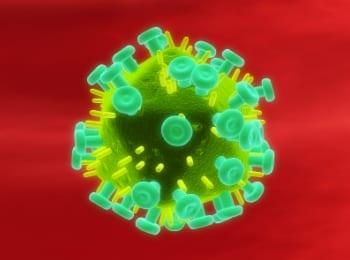
More than 30 million people worldwide are living with HIV, and about three million more are infected each year. Although people infected with the virus are living longer and healthier lives thanks to intense research, there is still no cure.
Fighting HIV and AIDS
One way to identify new strategies for fighting HIV is to look to those people whose bodies are naturally able to keep the virus as bay, at least for a time.
In 2007 researchers identified a variation near the HLA-C gene that was shown to affect the amount of virus present in the body after acute infection but before onset of AIDS symptoms. This so-called “viral set point” correlates with rate of disease progression, infectiousness and response to treatment.
Now another set of researchers has yet again shown that this variant affects viral set point.
Their results, published online this week in the journal Nature Genetics, further show that this variant influences the time it takes to progress to AIDS.
Viral Loads
Rasmi Thomas and colleagues analyzed the DNA from 828 people infected with HIV, all of European ancestry. Patients were divided into groups with low, medium and high viral loads (<2,000 copies of viral RNA per milliliter of blood, 2,000-10,000 copies, and >10,000 copies). About 62% of people with two Cs at had a viral load below 2,000, while only about 15% of people with two Ts controlled the HIV virus to this extent. About 33% of people with CT at fell into the “controller” group. These results agree with what was found by previous researchers.
In a separate group of 763 people infected with HIV (also all of European descent), the researchers found that the C version of was somewhat protective against progression from HIV infection to extremely low CD4 cell count, a measure of immune system strength. The C version of this SNP also conferred some protection against progression to an AIDS-defining complications and death.
As noted above, low viral set point is known to correlate with slower progression to AIDS, but the analysis by Thomas et al. indicates that the effects of on viral set point and progression are at least somewhat independent.
The researchers examined blood from 50 health donors to investigate the function of . They found that the C version was associated with increased HLA-C protein on the surface of immune cells. They conclude that this increased protein expression must be what helps the body fight off HIV, although the details of how increased HLA-C is beneficial are still unknown. Further research will be needed in order to translate these findings into new strategies for treatment or prevention of HIV infection.
- When was initially identified as a variant that could affect HIV viral set point, researchers suggested that vaccines designed to elicit an immune response mediated by HLA-C might be a good idea. Perhaps this new research, which further solidifies the importance of HLA-C variation in virus control, will rekindle that idea, especially in light of recent HIV vaccine disappointments (more here and here).




